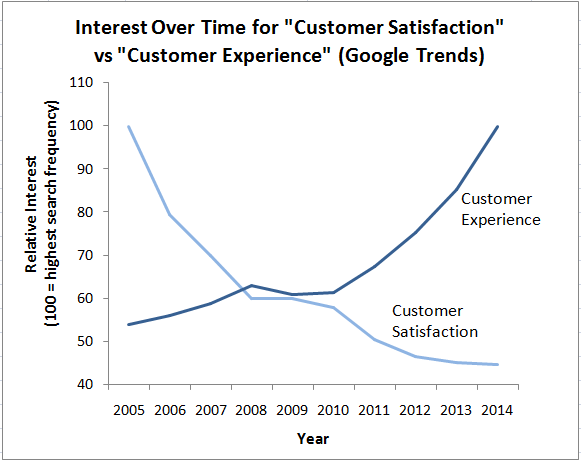When Was The Tipping Point For CX? It Looks Like It Started “Tipping” In 2010!
Last week, I stumbled across "The Behavioral Economics Guide, 2015" (which you can find here).
I’m kind of a Daniel Kahneman/Dan Ariely junkie so I immediately started scrolling through it looking for articles of interest. And there, on page 8 . . . big score! A graphic that plots the relative Google search frequency of the term “customer satisfaction” against the search frequency of the term “customer experience.”
Here’s why this chart floats my boat: For two years — from 2008 to 2010 — we see the terms coexisting as if people couldn’t quite make up their minds as to whether they were really different or not. Then in 2010 — pow! “Customer experience” starts shooting up like a rocket, while “customer satisfaction” takes a deep dive.

(Coincidentally, in 2011, the attendance at Forrester’s CXNYC shot up to more than 1,300 people on-site, from just more than 800 people on-site in 2010. That led us to add a CX Forum West — now CX San Francisco — and CX Europe starting in 2012.)
Try as I might, I can’t find any real-world trigger for why this surge in interest might have started right at that time. Neither can the article’s authors, who speculate, “The rising use of the ‘customer experience’ term should also reflect marketing with increasing interest in the creation of experiences and practices around the co-creation of value, in-the-moment consumer research, and neuromarketing, to name just a few.”
Okay, but why was there “increasing interest”? I’d love to hear your theories — just click “Add a comment” below or tweet them to @hmanning.
